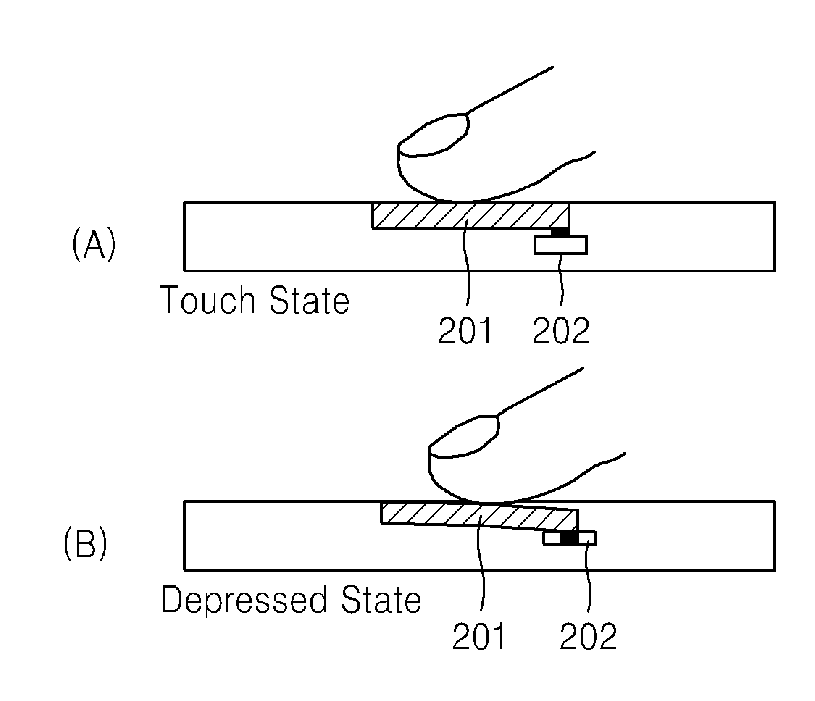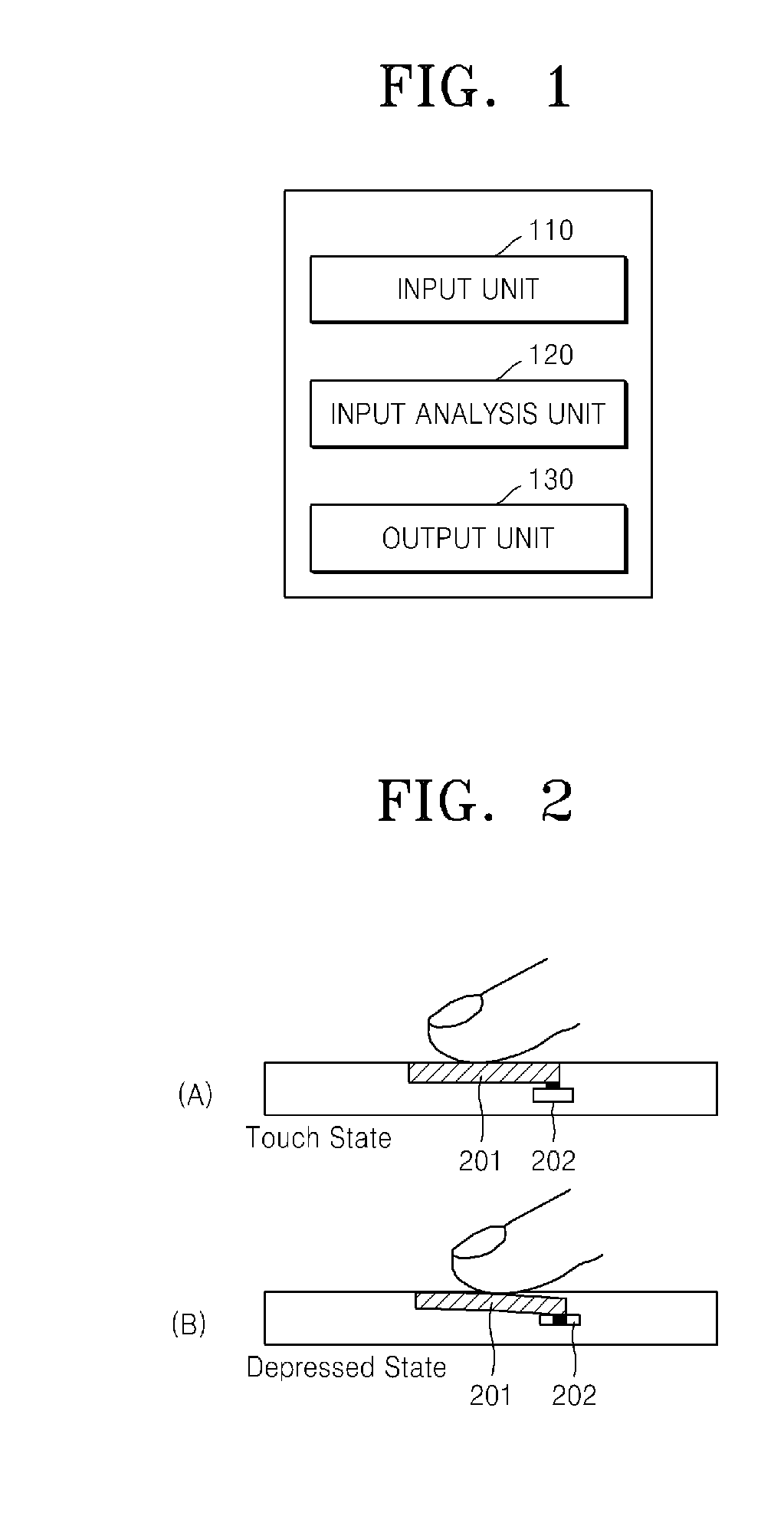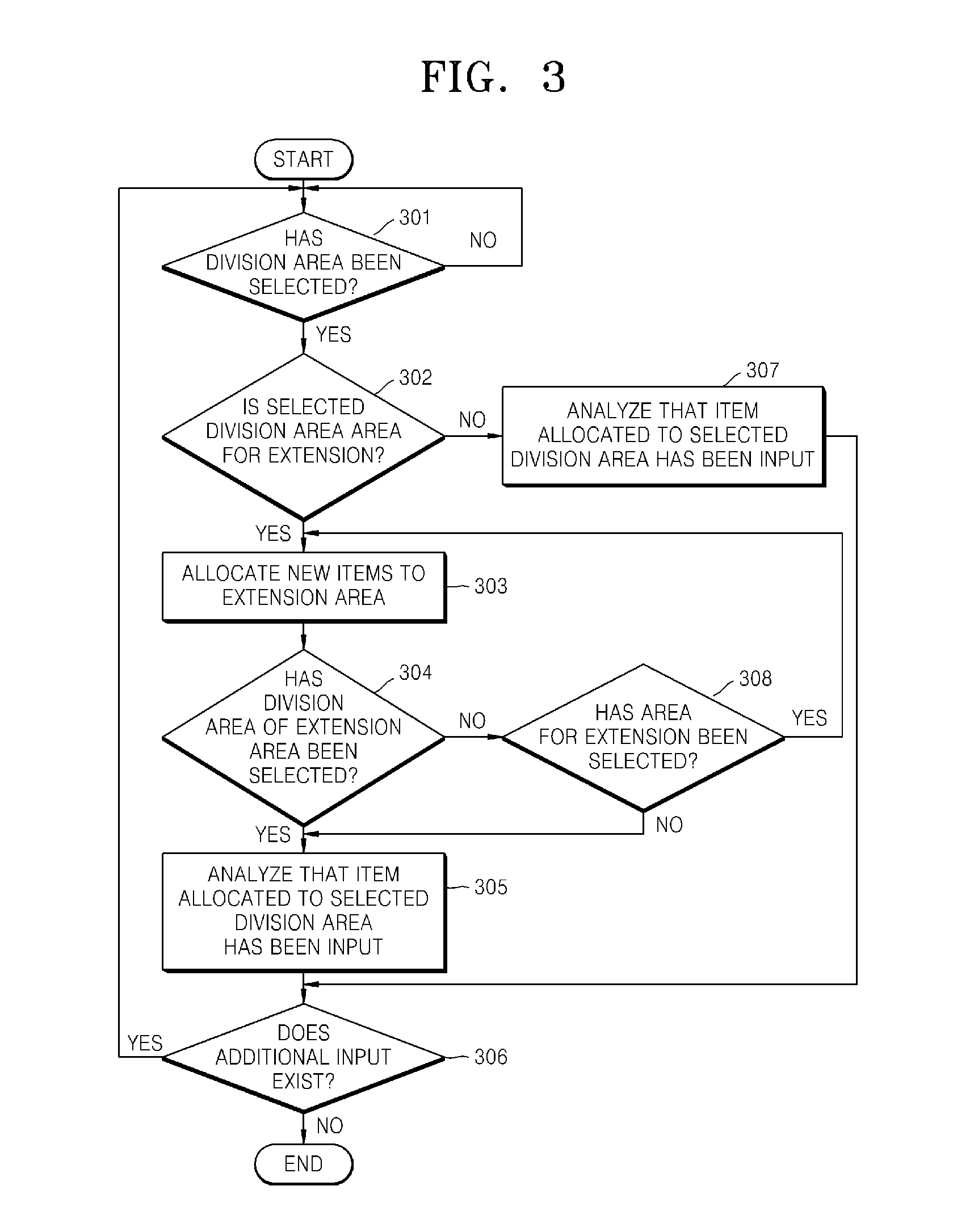Information input system and method using extension key
- Summary
- Abstract
- Description
- Claims
- Application Information
AI Technical Summary
Benefits of technology
Problems solved by technology
Method used
Image
Examples
fourth embodiment
4-1
[0160]The current embodiment relates to consonant arrangement to which the vowel input method according to the present invention is applied, wherein consonants are arranged by designating one or two consonants to each key considering the number of actually used frequencies but designating a consonant having a higher use frequency (FIG. 14) as a main character so that the main character is input when each corresponding key is pressed once, and an arrangement order of the consonants is a Hangul consonant order so that users can easily become familiar with the arrangement order.
[0161]Thus, as shown in FIG. 13, consonant arrangement is performed to input all consonants by designating ‘’, ‘’, ‘’, ‘’, ‘’, ‘’, and ‘’ to the ‘1’, ‘2’, ‘3’, ‘6’, ‘7’, ‘8’, and ‘9’ keys, respectively, and designating a function required to input ‘fortis’ besides these consonants to the ‘4’ key. Since a finger press action of the ‘9’ key to which ‘’ is designated is unnatural compared to other keys, it is pr...
fifth embodiment
5-1
[0188]When the input unit 110 according to an embodiment of the present invention includes a device for detecting a touch of a user, such as a touch pad or a touch screen, the present invention allows an initial consonant and a middle vowel to be input by a touch and drag. That is, both the consonant and the vowel can be simultaneously input as a syllable.
[0189]As an example with reference to FIG. 13, ‘’ is input in an existing keypad mobile phone by pressing the ‘1’ key corresponding to ‘’, pressing the ‘5’ key having the vowel input enabling function to input ‘’, and then pressing the ‘4’ key.
[0190]By comparing an input device formed by a virtual keyboard using a touch sensor with such a keypad mobile phone, ‘’ is input by one motion by touching an area corresponding to the ‘1’ key to input ‘’, moving a finger to an area corresponding to the ‘5’ key in a state where the finger is touching the touch sensor (a screen of a touch screen mobile phone) to enable the vowel input enabl...
sixth embodiment
6-1
[0205]Like the consonants, in the case of vowels also, a simple vowel can be changed to a compound vowel by using the selection function key.
[0206]FIG. 20 illustrates this embodiment, wherein an input of ‘’ and an input of ‘’ involve the same trajectory and the same touch-release action but finally performing a touch-release of the selection function key to input ‘’.
[0207]This is considering that the user inputs a vowel in the same manner as a selection of a consonant, simply having an advantage by inputting ‘’ and ‘’ in the same trajectory and the same touch-release action but finally performing a touch-release of the selection function key to input ‘’, and providing a method of correcting an error input of ‘’ with only the touch-release of the selection function key without correcting the error input of ‘’ in the first place even though ‘’ is input by mistake in the processes of FIGS. 19( ) to 19( ).
[0208]In addition, as shown in FIG. 17, a method of performing a touch-release ...
PUM
 Login to View More
Login to View More Abstract
Description
Claims
Application Information
 Login to View More
Login to View More - R&D
- Intellectual Property
- Life Sciences
- Materials
- Tech Scout
- Unparalleled Data Quality
- Higher Quality Content
- 60% Fewer Hallucinations
Browse by: Latest US Patents, China's latest patents, Technical Efficacy Thesaurus, Application Domain, Technology Topic, Popular Technical Reports.
© 2025 PatSnap. All rights reserved.Legal|Privacy policy|Modern Slavery Act Transparency Statement|Sitemap|About US| Contact US: help@patsnap.com



